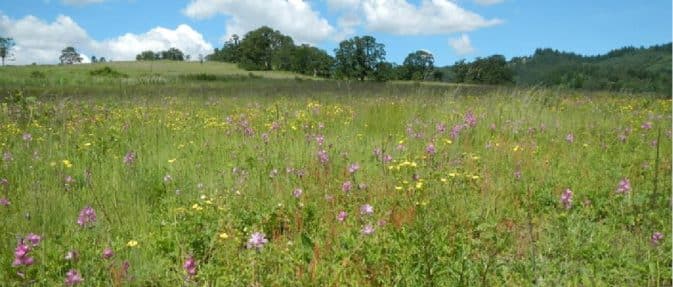
NCPRD Native Seed Packets
Are you ready to plant your packet of native wildflower seeds? Native plants provide an important food source and vital habitat for many animal species that live in Oregon, including a wide variety of birds, bees, butterflies, moths and beetles. Plants that are considered native to the area are better adapted to the local environment and conditions and help protect biodiversity. Help support bees and other pollinators at home by growing your own wildflower garden. Learn more about pollinators here.
Locally sourced seeds
NCPRD seed packets contain seeds from plants that are native to Oregon and the Northwest, all locally sourced from Heritage Seedlings and Liners. All seeds are commercially grown in Oregon from wild-collected Willamette Valley seed.
When and how to plant your seeds
Fall is a perfect time to sow plant and wildflower seeds. This timing follows the same approach as Mother Nature: wildflowers naturally drop their seeds in fall. Mix seed with slightly moistened sand, vermiculite, or sawdust. Broadcast seed by hand onto weed-free mulch or prepared seed bed. Press into soil and cover with a light dusting of sifted soil. Seeds need cool and moist conditions – sow in the fall for best results.
Northwest Pollinator Wildflower Seed Blend
This blend includes seeds from camas, woolly sunflower (also known as “Oregon sunshine”) and more. See exact portions of each species in the table below.
| Botanical Name | Common Name | Portion of Blend |
|---|---|---|
| Achillea millefolium | Yarrow | 5% |
| Camassia leichtlinii | Large Camas | 15% |
| Camassia quamash | Small Camas | 15% |
| Clarkia purpurea ssp quadrivulnera | purple clarkia | 12% |
| Eriophyllum lanatum | Oregon Sunshine | 16% |
| Gilia capitata | Bluehead Gilia | 12% |
| Sidalcea campestris | Meadow Checkerbroom | 25% |